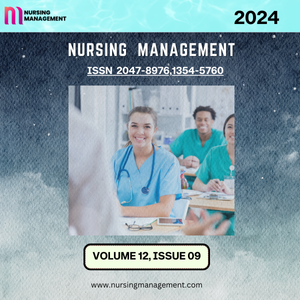Menu
Volume 10 Issue 10
The Burnout of Nurses in Intensive Care Units and the Impact of the Pandemic of SARS-CoV-2: Protocol of a Scoping Review
Andreia Lima,Maria Teresa Moreira,Carla Fernandes,Margarida Ferreira,Joana Teixeira,Vítor Parola andAdriana Coelho
1Department of Public Health and Infectious Disease, “Sapienza” University of Rome, 00185 Rome, Italy
2Interuniversity Center of Phlebolymphology (CIFL), International Research and Educational Program in Clinical and Experimental Biotechnology, University Magna Graecia of Catanzaro, 88100 Catanzaro, Italy
3Department of Law, Economics and Sociology, University Magna Graecia of Catanzaro, 88100 Catanzaro, Italy
4Department of Public Health, Vascular Surgery Unit, University Federico II of Naples, 80138 Naples, Italy
5Department of Pharmacy and Health and Nutrition Sciences, University of Calabria, 87036 Rende, Italy
6Department of Health Sciences, University Magna Graecia of Catanzaro, 88100 Catanzaro, Italy
7Department of Medical and Surgical Sciences, University Magna Graecia of Catanzaro, 88100 Catanzaro, Italy
Abstract
Wounds are a major public health challenge for nurses, and poor wound care has important implications for patients and health care systems. The aim of this study is to assess the Italian registered nurses’ (RNs) perception in the area of wound care, regarding their knowledge, tasks of care delivery, wound management, values, and attitudes, exploring also the previous specific education received during nursing education. An observational online web-based survey was used to assess learning goals and content for wound care education in undergraduate nursing education and the skills and level of self-efficacy in this area during clinical practice. The data were collected between April and May 2022. A total of 210 RNs were interviewed and divided into five national geographic areas. Northwestern RNs showed a better education about the wound care area during university courses: the rate of RNs that did not receive any training in the wound care area was lower than in other Italian geographical areas. Southern RNs presented a better knowledge about factors that expose the wound to becoming chronic, wound drains care, and the ability to assess diabetic foot. This study showed that, in Italy, education in wound care among nursing students is relatively poor, and many skills are achieved during an RN’s career in an empirical way.
Keywords: nurse; education; wound care; wounds; university
Editorial Board
Editor-In-Chief
Christopher J. Hayes, University of California, BerkeleyCalifornia
Associate Editors
David P. Williams, Johns Hopkins University
Sophia L. Brooks, University of Sydney
Arjun K. Mehta, University of Cambridge
Isabella S. Johnson, University of Toronto
Eli T. Garcia, University of Oxford
Grace M. Lewis, Stanford University
Mason R. Chen, University of Melbourne

